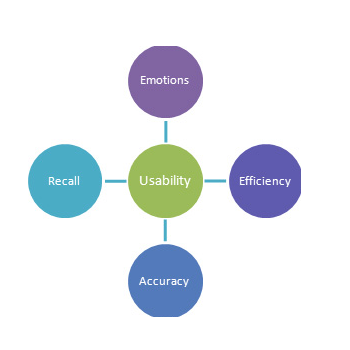Speaking in strictly technical terms, usability testing is the technique used in any kind of interactive design, which is supposed to be communicating with the users. The purpose is to evaluate the product and its usability by trying it out with real time users during the testing process. Usability testing gives real inputs and throws light on how the real users actually use the system. While many tend to confuse between usability testing and usability inspection methods. However, usability testing is an irreplaceable method and can certainly not be treated to be of equal importance as anything else. Usability inspection methods involve using different methods to evaluate a user interface but not by involving the users.

Why Is Usability Testing So Impending?
A software product or application is made by a group of developers. Even the expert professionals cannot avoid mistakes at times. Usability testing is done to find out if the application actually fulfills the intended purpose of the same. Websites, web applications, computer interfaces, devices and even consumer products benefit the most from this type of testing. Usability testing services typically evaluate the usability and the ease of use of a product or application. Testing, therefore, is very much opposed to formulating universal principles without going much in depth.
A business or organization wants an application to cater to the target users. Usability testing ensures that the design layout, sequence and everything else is perfect so that the application ultimately enables a smooth execution of the business functions. At the same time, testers step into the shoes of the real time users and find out how far the application is proving to be intuitive and helpful for them.
The Need for Usability Testing Services
Many might feel that when an application/system/software is already built keeping in mind certain specifications, how they can suddenly turn out to be unusable. Well, this can be explained with the following example. Let’s assume that a user needs to get a printed version of a Financial Update Report every 30 minutes. So, he will have to go through several steps like selecting Financial Reports from the list, specify the exact type of report along with parameters like data range, time zone, departments, etc. Finally, they have to generate a report, select and print the real report in PDF.
Now, while this system is perfectly functional, it is quite unusable because going through so many steps is totally inconvenient. The system should ideally have a feature that would have saved frequently generated reports as templates and made these reports easily available for printing from the homepage. Usability Testing simply makes a system or application more usable for the users, saving them from the hassle of thinking too hard every time they use the application. They should not be compelled to refer to the help screens often.
While developing an application, developers do not consider the fact that they are not the typical users. Since they have an extensive knowledge and expertise in the field, they end up using jargons and assumptions that are hardly known to the customers. There will be aspects with which the developers are very well acquainted with while these are extremely confusing for the ultimate end users. Usability testing addresses all these issues by putting the user right in the center of the development process. The approach ensures that the user stays foremost in any design decisions.
The Essential Usability Testing Checklist
So, what are the most important aspects checked in the process of usability testing? The process is primarily carried out to check if the application/system is:
- Easilynavigable
- Clear and consistent
- Having a minimalist design with consistency
- Providing feedback to the user of system status
- Presenting users with a confirmation option while deleting
- Free of technical languages, especially in error messages
In view of the above discussion about usability testing, its applications and benefits, it can be said that it is an important part of the development process that ultimately leads to an efficient application and satisfied users, both of which are the dominant purposes behind application development.


























